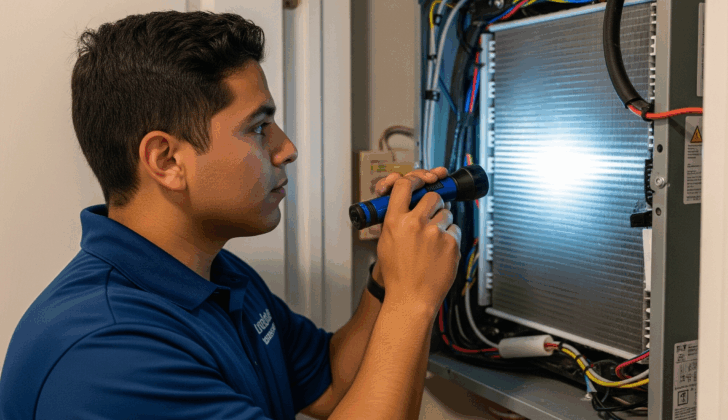A Cool Breeze… or a Hidden Health Hazard?
When summer heat rolls in, many of us rely on our air conditioners to stay cool and comfortable. But what if that refreshing blast of cold air is also blowing something harmful into your home—like mold?
It may sound surprising, but air conditioners can become a breeding ground for mold if they’re not cleaned and maintained properly. And unfortunately, that mold doesn’t just stay tucked away inside the unit—it can spread through the air you breathe.
In this article, we’ll explore what causes mold in air conditioners, the potential health risks, signs to watch for, and how to keep your home and lungs safe.
What Causes Mold to Grow in Air Conditioners?
Mold thrives in moist, dark, and poorly ventilated environments—making the inside of an air conditioner a perfect place if it isn’t regularly cleaned.
Here’s why:
-
Moisture buildup: AC units pull moisture from the air as they cool it. If condensation isn’t drained properly, it creates damp surfaces mold loves.
-
Dust and debris: Dust inside the unit provides “food” for mold spores.
-
Poor ventilation or infrequent use: AC systems in rarely used rooms or seasonal properties (like vacation homes) are especially prone to mold.
Even a small amount of mold can spread through the ducts and be carried into every room in your home.
The Health Risks: Why Mold in Your AC Is a Big Deal
Breathing in mold spores—especially over time—can cause a variety of symptoms, even in healthy people. For those with allergies, asthma, or weakened immune systems, the risks are even higher.
Common symptoms include:
-
Sneezing and nasal congestion
-
Coughing or wheezing
-
Itchy eyes, throat, or skin
-
Headaches or fatigue
-
Trouble breathing or chest tightness
-
Increased asthma symptoms
Long-term exposure can lead to more serious issues, including chronic sinus infections, respiratory inflammation, or worsening of preexisting lung conditions.
In children, the elderly, and people with immune disorders, mold exposure can be especially dangerous.
How to Tell If Mold Is in Your Air Conditioner
Sometimes mold hides out of sight, but here are a few clues that it may be lurking in your system:
-
Musty or mildew-like smell when the AC is running
-
Visible mold around vents, filters, or the unit itself
-
Increased allergy or asthma symptoms indoors
-
Black or green spots inside the unit or on the vent covers
-
Water pooling near the base of your AC or in the drain pan
If you suspect mold, it’s important to act quickly before it spreads further.
What You Can Do: Prevention and Cleaning Tips
The good news? With a little maintenance and awareness, you can keep your AC mold-free and your air safe.
1. Replace or Clean Filters Regularly
-
Check your filter every 1–2 months (especially in heavy-use seasons).
-
Dirty filters trap moisture and dust—ideal for mold growth.
2. Keep the Drain Line Clear
-
The condensate drain removes excess moisture from the unit.
-
A clogged drain can lead to standing water and mold growth.
3. Schedule Professional Maintenance
-
Have your AC system professionally cleaned and inspected once or twice a year.
-
HVAC technicians can spot early signs of mold and clean areas you can’t reach.
4. Run a Dehumidifier
-
In humid climates, a dehumidifier can reduce indoor moisture and discourage mold.
5. Use Your AC Regularly
-
Running your AC prevents moisture buildup and keeps air moving.
-
Stagnant air in unused units can lead to mold growth.
When to Call a Professional
If you see visible mold inside the unit, around ducts, or if your home has a strong musty smell, it’s time to call in the pros. Mold remediation experts can:
-
Safely remove mold without spreading spores
-
Deep clean air ducts and internal AC parts
-
Identify sources of excess moisture
-
Recommend ongoing prevention strategies
Remember, mold spores can spread invisibly through the air—so fast, thorough cleanup is key.
Air Conditioning Doesn’t Have to Mean Dirty Air
Your air conditioner should be keeping you cool and comfortable—not making you sick. By learning the signs of mold, taking preventive steps, and cleaning your system regularly, you can protect your home and your health.
Breathe easy, stay cool, and take a moment to check your AC. A quick filter change or cleaning today could make a big difference for your lungs tomorrow.
For further healthy living tips visit:












